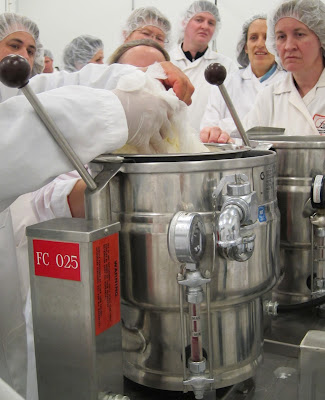Rioja: Conversations with Winemakers
The cellar at López de Heredia winery in Rioja, Spain, is festooned with cobwebs and their oldest wine dates back to 1885.
There is a long history of winemaking in Rioja, Spain’s best known wine region. French winemakers moved to the area when phylloxera destroyed their own vineyards, and they introduced a very traditional style of wine that defined quality by how long it was aged (hence the labeling hierarchy with two-year-old Crianza, three-year-old Reserva, and five-year-old Gran Reserva).
Nowadays, competition with wines from around the world has led to changes and divisions within the Rioja winemaking community as traditional and modern styles of winemaking compete for market dominance. The new school wines are aged less and fit the current demand for riper, fruitier wines.
Rioja: Conversations with Winemakers is edited by Christopher Barnes and published by Grape Collective (I was sent a preview copy of the ebook). The core of the book is interviews with seven winemakers who explain, in their own words, the history of their winery, their winemaking principles, and their dreams for the future. Videos on Vimeo complement the text.
The ebook is the first in a series of books, published by Grape Collective, about winemakers from different regions around the globe.
The Families
Many of the wineries are family wineries. “We learn from generation to generation,” says María José López de Heredia. “My sister is already teaching her two little daughters, aged 7 years and 5 years old, and already they have done several tastings of grapes. You learn first by tasting the grapes. Each grape has a different composition of sugar and acidity – and you learn at home.”
The Vines
All the winemakers emphasized that they are farmers – “vinemakers not winemakers.” Miguel Angel de Gregorio of Finca Allende explains, “We work a lot on the vines to obtain the best grapes possible and we work in the cellar so as not to damage the grapes!”
The Dreams
It was fascinating to compare the winemakers’ goals for their wineries. María José López de Heredia’s great-grandfather started their winery by accident, but he quickly decided that he wanted to make the best wine in Spain: “In fact, he used to call it ‘La Suprema Rioja!’ He wanted to sell wine to people who owned a car, wore a tie, spoke languages and were related to the royal family or were diplomats.”
Ana Martinez Bujanda is a fifth generation winemaker at Conde de Valdemar winery. Despite their long history, the family has chosen to pursue a very modern style. “We were one of the first to make the new style of Rioja wines with more fruit, more modern and with another style,” Ana says. “Our idea is to always be the first in Rioja, making new things and showing people new ways, new grapes, and always something new for us to give to the people.”
Conversations with Winemakers
I enjoyed reading Rioja: Conversations with Winemakers. The book is short and very accessible but left me longing for more in-depth, detailed interviews and more background information.
The hotel and restaurant lists are interesting, but I would definitely want to do more research before travelling to this area, and I would have liked to know if the profiled wineries offered tours or tastings.
If you’re interested in learning more about Spanish wines, I recommend reading this book, which is available on the Grape Collective website.
You may also be interested in reading the articles I wrote about the wineries in Jumilla in southeast Spain.





Comments